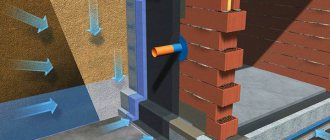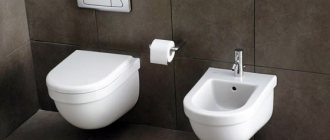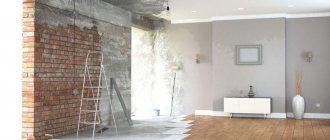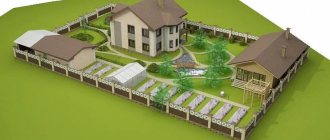The question “What do you want to be when you grow up?” is asked very often in lessons. Moreover, they try to entice a child into one profession or another even during preschool preparation. This idea should not be underestimated. A baby who absorbs everything that surrounds him like a sponge begins to be interested not only in objects, but also in the actions of adults. This is how his idea of himself and his future role in society is gradually formed.
Recently, an incomprehensible but interesting area of business has occupied a special place in the imagination of children.
The guys, who already understand that money is a kind of “language” of people, plan to earn good money in the future. And at the same time work exclusively for yourself. This desire for financial and psychological independence is quite understandable.
How to prepare students for the future?
However, teenagers, as a rule, have a vague idea of how a business project is developed and implemented. In this case, it is important for both the teacher and the parent to explain to the student that entrepreneurship requires serious emotional and material investments from a person. The key to future success is organization, the ability to correctly allocate resources and, of course, knowledge.
Each child initially has unique potential. The fundamental goal of the school and the education system as a whole is to provide opportunities for self-realization of the little person. The correct approach to identifying a student’s abilities will produce not only an intelligent member of society, but also a talented specialist who is sincerely involved in his or her professional field. Design and research activities will help achieve this noble goal.
What is a project and project activities
The educational activities of schools are regulated by the Federal State Educational Standards (FSES). These standards introduce the concept of project activity .
Project activity is not a whim of the teacher, it is a requirement of the Ministry of Education and Science.
Project activity is an independent activity aimed at achieving a certain result, goal or solving a problem (scientific, personal or social).
A project is something that is undertaken to create and achieve a new product/result or solve a problem.
Projects can be of completely different directions: from creative to research:
Goals of project activities
- Formation in schoolchildren of the basics of research and design activities and skills in development, implementation and public presentation of project results.
- Mastering the techniques of cooperation and interaction with schoolchildren and adults in joint project activities.
- Forming the ability to plan research or project work taking into account the goal: formulate a problem , hypothesis, set research objectives, choose methods, draw conclusions based on the results of the work done.
Features of project activities
A project is limited in time: it has a beginning and an end. Work on the project occurs in several stages. Both time and stages are determined before work on the project begins, during its planning.
, a new product must be created or research into a scientific problem must be carried out.
The number of project phases will depend on what product you want to create as a result of the project. But the general progress of work on the project will be the same for everyone:
Project stages
The “ Implement tasks and create a product ” step will depend on the specific project and may contain an unlimited number of stages.
The content of each stage may change as the project progresses. This is fine. Why? Because something can go wrong, conditions can change, you can learn something new that you didn’t know before, etc. Everything is like in adult life. Therefore, we correct the course and move on towards our goal!
How to choose a topic for a school project
You need to choose a topic that is relevant and interesting. You should be interested in the area of knowledge in which you are completing the project. Otherwise, working on the project will be boring, and protecting it will be difficult.
There are several options for how students choose a topic for their project:
Option 1. Choose one of the topics suggested by the class teacher. Option 2. Choose a school subject and a teacher who will suggest a topic in your subject. Option 3. Come up with a topic yourself. Think about what you, your classmates or adults are missing, and try to formulate a project topic to solve the problem.
Since the result of the project should be a new product , you need to think carefully about what can be created as a result of the project. In the following table we provide examples of what can be done as a project deliverable:
| Project topic | Project product/result |
| Computer games: benefit or harm | Video or computer animation on safe computer work. |
| What do our names mean? | A booklet with the names of classmates and their meanings. |
| History of football | A booklet with a list of football sections that exist in the city. Can be divided into two categories: free and paid. |
| Multiplication table on fingers | A brochure or booklet with multiplication rules on your fingers. Video demonstrating multiplication on fingers. |
| Poets and writers about my hometown | Blog on the Internet dedicated to this topic. Can be created on free platforms (Blogger from Google, https://www.blogger.com). |
| Voiced and voiceless consonants | A program in the Scratch language for testing knowledge of voiced and voiceless consonants. |
| Vegetarianism | Brochure with recipes for vegetarian dishes. Internet blog dedicated to vegetarianism. Can be done on Google's free Blogger platform, https://www.blogger.com. |
Test your knowledge
If you want to test your knowledge on the topic of this lesson, you can take a short test consisting of several questions. For each question, only 1 option can be correct. After you select one of the options, the system automatically moves on to the next question. The points you receive are affected by the correctness of your answers and the time spent on completion. Please note that the questions are different each time and the options are mixed.
Statistics Full screen
Sergey KrutkoKirill Nogales
← Project management Team management →
Relevance, purpose, objectives and hypothesis of the project
about the relevance , goals , objectives and hypothesis in the text of the project and talk about it at its defense.
Relevance is the importance of the project for the present time. If the project is not relevant or important, then it is not worth doing. Relevance can be considered as a set of some problems that exist in society or among some group of people (for example, classmates, teachers, parents) and that need to be solved. Simply writing “the topic is relevant because I am personally interested” is wrong. The relevance will have to be revealed and proven.
For example, for the topic “Computer games: benefits or harm,” relevance can be described as follows:
My friends own more than one gadget. Basically, this is a smartphone and a laptop. In addition, many people also have a video game console at home. All these devices are becoming more accessible, so more and more of them are appearing in families. But is it really safe to immerse yourself in virtual reality for a long time? This is what my research is about.
Life hack : to prove the relevance of the project, use the service https://wordstat.yandex.ru . This service shows statistics of user requests on Yandex. The more people search for something, the more relevant it becomes. You can include screenshots from this service in your project.
A goal is a global result that you want to achieve in a project. For example, “informing schoolchildren (or classmates) about the benefits and dangers of computer games”, “increasing the literacy of classmates in the field of voiced and voiceless consonants.”
To articulate relevance and purpose , answer the questions “Why are you doing this?” (relevance) and “What do you want to achieve with this?” (target). There is no need to come up with unnecessary and incomprehensible words, write as it is.
Objectives are the actions that need to be taken to achieve a goal. Here you should list the stages of working on the project from studying the literature to obtaining the product.
A hypothesis is an assumption, an assumption, the true value of which is uncertain. The hypothesis is not built for all projects, but only for those of a research nature, and even then not always.
Straight to the happy ending
Looks like we've saved you the trouble of working on the weekend! You're welcome. You now have a complete project planning process and a simple plan template that will help guide your next project and all your projects to success. Perhaps when all this complex planning is simplified, you will find work more enjoyable. How do you think?
Now that you've mastered creating a project plan, here are some of the best tips from leaders to help your team work more efficiently.
Defining project phases and executing the project
We have shown in the figure what the stages of work on the project look like in general.
The step “ Implementation of tasks and creation of a product ” must be divided into several stages, and the deadlines for completing each of them must be determined.
We cannot make any specific recommendations here, as these steps will be unique to each project. Even two projects completed by different authors, but on the same topic, will differ in this part. Everyone solves their project in their own way, and achieves the goal in different ways too.
Here is an example of the stages for the project “Voiced and voiceless consonants”, which involves the creation of a small computer program as the final product:
- Determine the functional requirements for the application “Trainer for teaching schoolchildren voiced and voiceless consonants.”
- Select a program to create an application.
- Create an application.
- Test the application.
- Create a User Guide.
Digital solutions
Several online resources will be of great help to teachers: the School Projects Laboratory being developed by Enlightenment (will be available in the fall of 2021) and Proobskills.
Work in the School Projects Laboratory includes 3 stages:
- The simplest level: a novice designer needs to fill in the empty fields of the template with a theme and bring the work to its logical conclusion;
- The second stage is a little more difficult. Here the child will have to adjust the structure of the project or research himself;
- The third level, where the student creates his own project independently, and the teacher acts as a curator.
The uniqueness of “Proobskills” lies in the provision of checklists to all participants. This methodical and meticulous approach has undeniable advantages:
- The relevance of the research will be justified at the initial stage of work;
- A clear and understandable formulation of the technical specifications, which will simplify the process of its implementation;
- Selection of required literature. During preparation, the child will learn to independently cut off unreliable sources of information;
- Tracking all the nuances of the research process. Using the designer’s checklist, the teacher will see how the work is progressing, what mistakes have been made, where the knowledge base or perseverance was lacking;
- A step-by-step analysis of the progress of work, its adjustment and final protection will enhance the quality of the result obtained.
Project design
Project design is the creation of a text document in which all stages of work on the project will be described, the goal and objectives will be indicated, the relevance will be justified, and conclusions will be written. It is not necessary to include a lot of text in the text of the project; most of it can be replaced with pictures: graphs, screenshots, photographs. This, firstly, simplifies the writing of the text of the project, and secondly, it perfectly illustrates it and proves that you did it yourself.
Some schools and competitions require authors to take photographs of themselves working on their project.
What program should I use to complete the project?
Microsoft WORD is part of the Microsoft Office suite and itself a popular program for working with text. But it is commercial, and therefore may not be installed on your computer.
What to do in this case? There are actually a lot of options. There are many programs and services that allow you to work with text in the same way as WORD. And, by the way, in government agencies it is often not MicrosoftWORD that is installed, but its free analogues. This has long been something of a corporate standard.
So, free analogues of Microsoft Office:
- LibreOffice (https://ru.libreoffice.org).
- OpenOffice.org (https://www.openoffice.org/ru/).
- Google Docs service (https://docs.google.com/document).
Registration requirements
If you submit a project to any competition, the design requirements will be contained in the Information Message for this event. There is no need to invent anything: format it as requested by the Organizers of the competition or conference.
If the project is being prepared for defense at school, then the teacher may voice the requirements to you. Ask your class teacher about this, since the school most likely has a special local act in which all this is described.
If you were not given the design rules or they are left at your discretion, then use the requirements for creating documents from GOST R 7.0.97-2016:
- The pages must be numbered starting from the second. Thus, the title page does not need to be numbered . Page numbers are placed in the middle of the top margin of the document at a distance of at least 10 mm from the top edge of the sheet.
- Use freely available free fonts. For example, Times New Roman . Acceptable font sizes: 12, 13, 14 (optimal). Tables can use smaller font sizes.
- The paragraph indentation of the document text is 1.25 cm .
- Section and subsection headings are printed with a paragraph indentation of 1.25 cm or centered.
- The text of the document is printed at 1.5 line spacing .
- The spacing between letters in words is normal.
- The space between words is one space.
- Document text is aligned to the width of the sheet.
Creating a presentation and protecting the project
These are the final stages. How well your defense will go depends on how well you make your electronic presentation.
What program should I use to make the presentation?
Use the same recommendations we gave above.
What slides should be in a presentation?
We discussed the rules of good manners for preparing a presentation in the article What should be a presentation for a conference or competition











